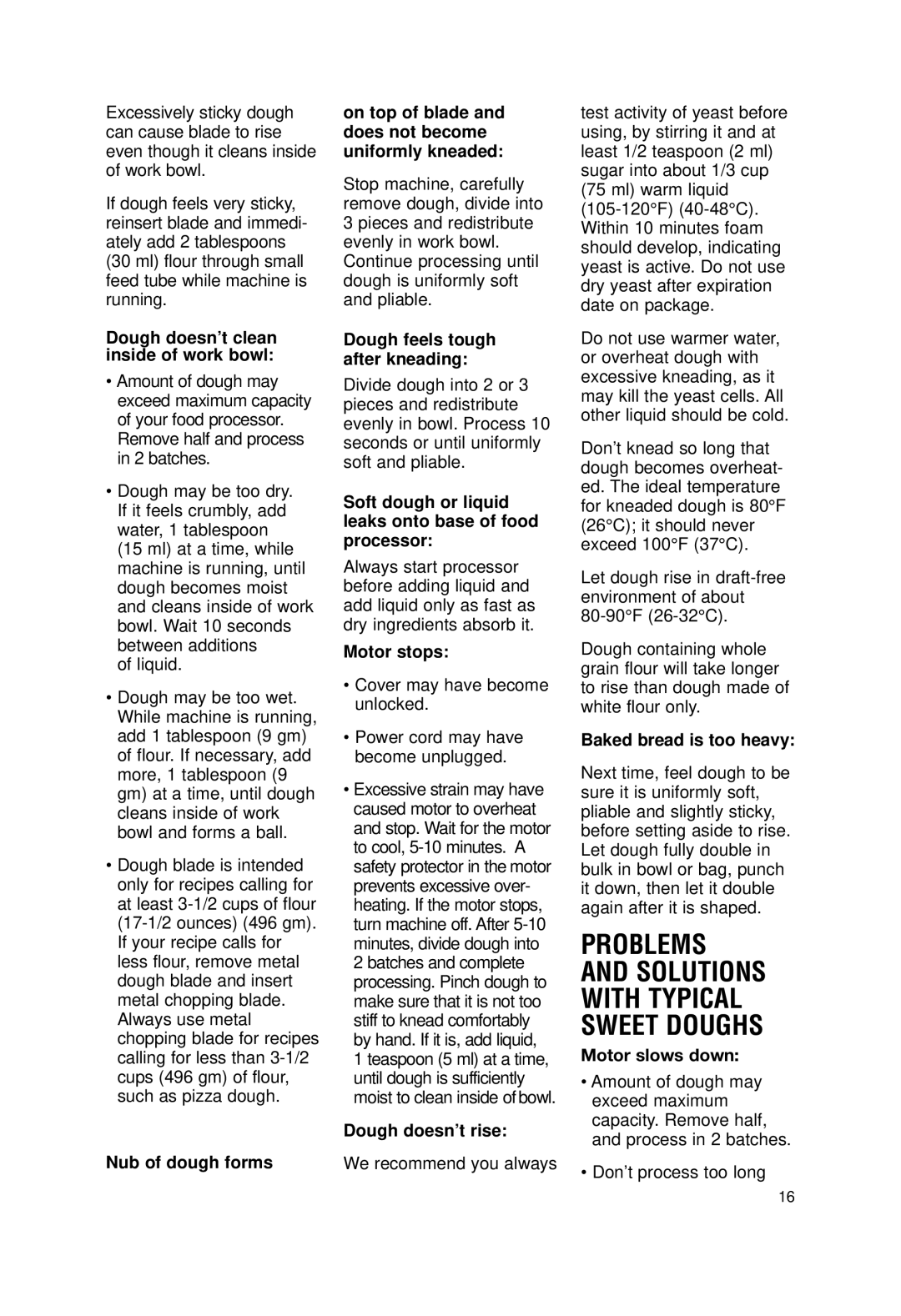DLC-2007N specifications
The Cuisinart DLC-2007N is a powerful food processor that stands out in the kitchen appliance market, designed to make food preparation easier and faster. With a 7-cup capacity, it is ideal for both small tasks and larger meals, accommodating the needs of families and individuals alike. One of the primary features of the DLC-2007N is its durable and efficient motor, boasting a robust 600-watt power output. This allows it to tackle tough ingredients with ease, whether chopping vegetables, kneading dough, or pureeing soups.A key characteristic of the Cuisinart DLC-2007N is its versatility. It comes equipped with an assortment of stainless-steel blades and discs that enhance its multifunctionality. The slicing and shredding discs are perfect for preparing salads and garnishes, while the chopping blade is designed for precise cuts. This versatility enables users to experiment with various recipes, making the kitchen experience more enjoyable and creative.
The construction of the DLC-2007N emphasizes ease of use and safety. It features a simple control panel with an on/off switch and a pulse function for added control over processing. The unit is designed with a safety lock mechanism that ensures the processor will not operate unless the lid is securely in place, which is a crucial feature for preventing accidents in the kitchen.
Furthermore, the Cuisinart DLC-2007N also boasts a large feed tube that accommodates whole fruits and vegetables, reducing the need for pre-cutting and enabling efficient food prep. This design is complemented by a detachable bowl and lid, making cleanup quick and hassle-free. The dishwasher-safe parts are an additional convenience, ensuring that post-meal cleanup will not be a burdensome task.
Another noteworthy technology in the DLC-2007N is its compact design, allowing it to fit comfortably on most kitchen countertops without consuming excessive space. Combining functionality with sleek aesthetics, it is available in various colors to match different kitchen styles.
In summary, the Cuisinart DLC-2007N is a robust, efficient, and versatile kitchen appliance that simplifies food preparation. Its powerful motor, assortment of blades, user-friendly features, and compact design make it an excellent choice for anyone looking to elevate their culinary skills or streamline their cooking processes.

